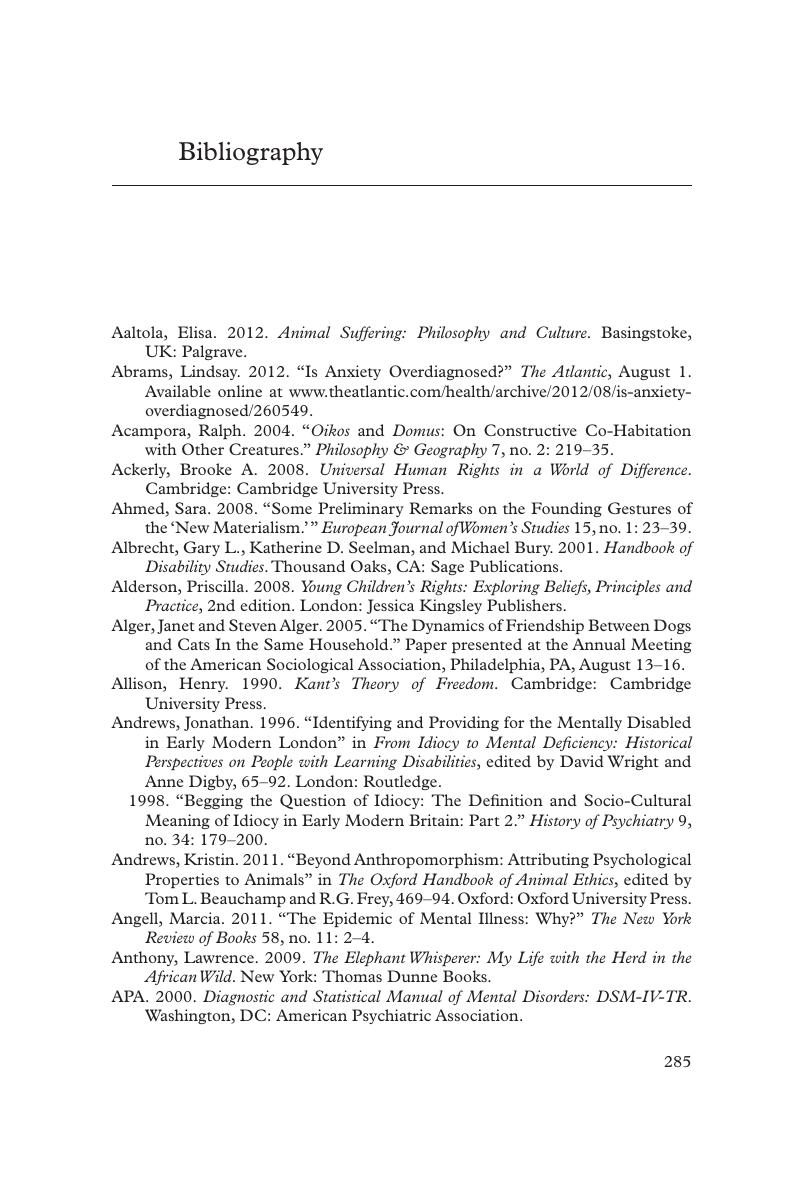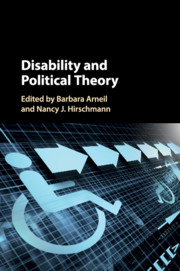Book contents
- Disability and Political Theory
- Disability and Political Theory
- Copyright page
- Dedication
- Contents
- Contributors
- Foreword
- Disability and Political Theory
- 1 Disability in Political Theory versus International Practice
- 2 The Ableist Contract
- 3 Disavowals of Disability in Rawls’ Theory of Justice and his Critics
- 4 Disabling Barriers, Enabling Freedom
- 5 Wollstonecraft, Hobbes, and the Rationality of Women’s Anxiety
- 6 Dyslexia Manifesto
- 7 Rethinking Membership and Participation in an Inclusive Democracy
- 8 Hannah Arendt and Disability
- 9 Connecting the Disconnect
- 10 Disability and Violence
- 11 Rethinking “Cure” and “Accommodation”
- Bibliography
- Index
- References
Bibliography
Published online by Cambridge University Press: 28 March 2017
- Disability and Political Theory
- Disability and Political Theory
- Copyright page
- Dedication
- Contents
- Contributors
- Foreword
- Disability and Political Theory
- 1 Disability in Political Theory versus International Practice
- 2 The Ableist Contract
- 3 Disavowals of Disability in Rawls’ Theory of Justice and his Critics
- 4 Disabling Barriers, Enabling Freedom
- 5 Wollstonecraft, Hobbes, and the Rationality of Women’s Anxiety
- 6 Dyslexia Manifesto
- 7 Rethinking Membership and Participation in an Inclusive Democracy
- 8 Hannah Arendt and Disability
- 9 Connecting the Disconnect
- 10 Disability and Violence
- 11 Rethinking “Cure” and “Accommodation”
- Bibliography
- Index
- References
Summary

- Type
- Chapter
- Information
- Disability and Political Theory , pp. 285 - 316Publisher: Cambridge University PressPrint publication year: 2016



